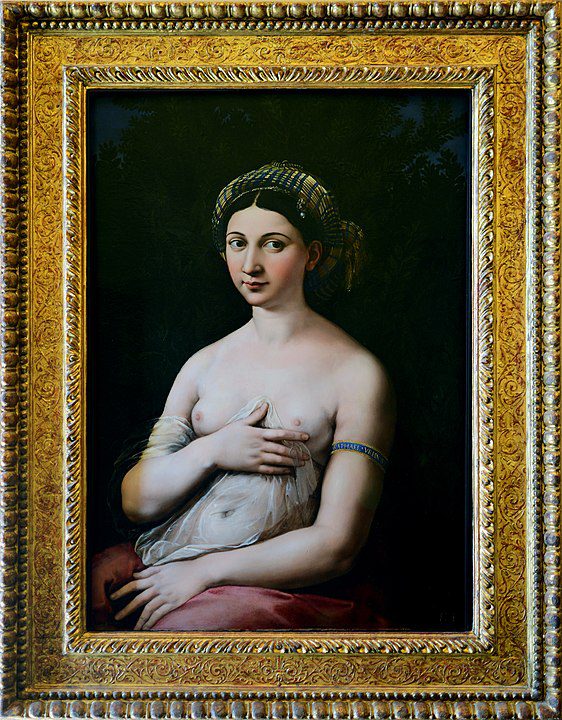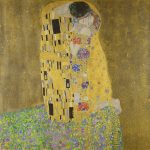
Raphael, one of the greatest artists of the Italian Renaissance, left an indelible mark on the art world. His full name was Raffaello Sanzio da Urbino. Born in 1483, he became known for his beautiful paintings and charming personality. Raphael’s life, however, was not only about art. It also included a significant personal relationship with a woman named Margherita Luti. Margherita, often referred to as La Fornarina, was Raphael’s muse and lover. She inspired some of his most famous works. This article explores their relationship and how it influenced Raphael’s art.
Raphael’s Early Life and Career
Raphael was born in Urbino, Italy, into a family of artists. His father, Giovanni Santi, was a painter for the Duke of Urbino. Raphael learned the basics of art from his father. After his father’s death, Raphael continued his studies under the guidance of various artists. He eventually moved to Florence, where he absorbed the influences of great masters like Leonardo da Vinci and Michelangelo. By his early twenties, Raphael had already established himself as a prominent artist.
Raphael’s works include frescoes, portraits, and religious paintings. His style was characterized by clarity, harmony, and beauty. He had a unique ability to depict human emotions with great subtlety. His most famous works include “The School of Athens” and “The Sistine Madonna.” These masterpieces not only showcased his technical skills but also his deep understanding of human nature. His art was a reflection of the Renaissance ideals of balance, proportion, and realism.
In addition to his technical prowess, Raphael was also a skilled architect. He was appointed as the chief architect of St. Peter’s Basilica in Vatican City. His contributions to architecture further cemented his reputation as a versatile genius. Despite his relatively short life, Raphael’s influence on art and architecture remains profound.
Meeting Margherita Luti
Margherita Luti, the daughter of a baker, lived in Rome. She became an important figure in Raphael’s life. It is believed that Raphael met Margherita around 1514. Her beauty captivated him, and she quickly became his muse. Margherita’s relationship with Raphael was both personal and professional. She inspired some of his most intimate and striking works.
Margherita’s influence on Raphael can be seen in several of his paintings. One of the most famous is “La Fornarina,” which portrays Margherita herself. In this painting, she is depicted with a gentle smile, wearing a turban and a delicate bracelet inscribed with Raphael’s name. The portrait exudes a sense of intimacy and affection, highlighting the close bond between the artist and his muse.
Their relationship was not without challenges. Margherita’s lower social status posed a problem in the eyes of society. Despite these obstacles, their connection remained strong. Raphael’s art often reflected his deep feelings for Margherita, showcasing her as a symbol of beauty and love. Their relationship was a testament to the powerful bond between artist and muse.
Margherita’s presence in Raphael’s life brought a new dimension to his work. Her influence extended beyond mere physical inspiration. She provided emotional support and companionship, which deeply affected Raphael’s creativity. This relationship added a personal touch to his art, making it even more relatable and profound.
Margherita as La Fornarina
“La Fornarina” is one of Raphael’s most famous portraits. It depicts Margherita Luti in a sensual and intimate pose. The painting is believed to have been created around 1518. Margherita’s portrayal in the painting is both tender and captivating. She appears serene and confident, with a subtle smile that suggests a close relationship with the artist.
The painting is notable for its attention to detail. Margherita’s delicate features, the soft folds of her clothing, and the intricate jewelry she wears all contribute to the painting’s allure. The bracelet on her arm, inscribed with Raphael’s name, is a clear indication of their close bond. This detail suggests a level of intimacy and affection that goes beyond a typical artist-model relationship.
“La Fornarina” is also significant for its use of light and shadow. Raphael masterfully uses chiaroscuro to highlight Margherita’s features, creating a sense of depth and realism. The play of light and shadow adds to the painting’s emotional impact, drawing viewers into the intimate world of the artist and his muse.
The portrait of Margherita Luti as La Fornarina is a testament to Raphael’s skill as a portrait artist. It captures not only the physical beauty of his subject but also the emotional connection between them. This painting remains one of the most celebrated works of the Renaissance, symbolizing the powerful influence of muse on artist.
The Influence of Margherita on Raphael’s Work
Margherita Luti’s presence in Raphael’s life had a profound impact on his art. Her influence can be seen in several of his works, where she often appears as a model. Her beauty and grace provided inspiration for some of Raphael’s most memorable paintings. The emotional connection between them added depth and complexity to his work.
One notable example is “La Donna Velata,” which translates to “The Veiled Woman.” This portrait, believed to depict Margherita, showcases her in a more formal and dignified manner. Her expression is serene and introspective, suggesting a deeper emotional connection between the artist and his subject. The painting’s use of rich colors and detailed textures highlights Raphael’s skill in capturing the essence of his muse.
Margherita’s influence also extended to Raphael’s religious works. In several Madonna paintings, scholars believe Margherita served as the model for the Virgin Mary. Her serene and compassionate features lent a sense of realism and humanity to these religious depictions. This blending of personal and religious themes added a unique dimension to Raphael’s art, making it more relatable to viewers.
The emotional bond between Raphael and Margherita also influenced his use of symbolism. In many of his works, he included subtle references to their relationship. These symbols, such as the bracelet in “La Fornarina,” added layers of meaning to his paintings. They allowed viewers to glimpse the personal life of the artist, creating a deeper connection between the art and its audience.
Challenges in Their Relationship
Raphael and Margherita Luti’s relationship faced several challenges. The primary obstacle was their difference in social status. Raphael was a celebrated artist, while Margherita was the daughter of a baker. This disparity made their relationship socially unacceptable to many. Despite this, they maintained a close bond.
Raphael’s commitment to his art also posed challenges. He spent long hours working on commissions and projects, which often kept him away from Margherita. Balancing his professional responsibilities with his personal life was not easy. However, Margherita’s support and understanding helped him navigate these difficulties.
Another challenge was the secrecy surrounding their relationship. Due to societal norms, Raphael and Margherita had to keep their relationship private. This secrecy added stress and tension to their bond. Despite these challenges, their connection remained strong, as evidenced by Raphael’s affectionate portrayals of Margherita in his art.
Tragically, Raphael’s untimely death in 1520 brought their relationship to an end. His passing left a void in Margherita’s life. However, the legacy of their love endures through Raphael’s art. His paintings of Margherita continue to captivate and inspire, serving as a testament to their enduring bond.
Raphael’s Legacy and Margherita’s Role
Raphael’s legacy as a master of the Renaissance is well-established. His contributions to art and architecture have left an indelible mark on history. Margherita Luti played a significant role in shaping this legacy. Her influence on Raphael’s work is evident in the emotional depth and beauty of his paintings.
Margherita’s presence in Raphael’s life brought a personal touch to his art. Her role as his muse inspired some of his most memorable works. The emotional connection between them added layers of meaning to his paintings, making them more profound and relatable. Margherita’s influence extended beyond mere inspiration; she provided emotional support and companionship, which deeply affected Raphael’s creativity.
Raphael’s portrayal of Margherita in his paintings has immortalized her. Works like “La Fornarina” and “La Donna Velata” continue to be celebrated for their beauty and emotional depth. These portraits serve as a testament to the powerful bond between artist and muse. They highlight the importance of personal relationships in the creative process.
Margherita’s role in Raphael’s life underscores the significance of muse in art. Her influence on his work reminds us that behind every great artist is often a source of inspiration. Margherita Luti’s contribution to Raphael’s legacy is a testament to the enduring power of love and creativity.
Conclusion
The story of Raphael and Margherita Luti is a poignant reminder of the powerful bond between artist and muse. Their relationship, marked by love and inspiration, had a profound impact on Raphael’s work. Margherita’s influence can be seen in several of his most celebrated paintings, which continue to captivate and inspire audiences today.
Raphael’s portrayal of Margherita in works like “La Fornarina” and “La Donna Velata” showcases not only her physical beauty but also the deep emotional connection between them. These paintings remain iconic examples of Renaissance art, highlighting the importance of personal relationships in the creative process.
Despite the challenges they faced, Raphael and Margherita’s bond endured, leaving a lasting legacy in the world of art. Their story reminds us of the significance of love, inspiration, and emotional support in the life of an artist. The legacy of Raphael and Margherita Luti continues to inspire, serving as a testament to the enduring power of creativity and human connection.




